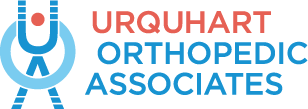Healthcare News
A patient's own cartilage cells may be the key to promoting healing after hip surgery
In their study published in the journal Archives of Orthopaedic and Trauma Surgery, the research team collected cartilage removed during hip surgeries.
Understanding the differences between mobility and flexibility
Mobility and flexibility are related but distinct. Improving flexibility and mobility may improve a person’s athletic performance and range of motion, and help to reduce the risk of injuries.
Management of Severe Elbow Arthritis in a Young Patient
Elbow osteoarthritis is occasionally primary and most often post-traumatic. Nonoperative treatment is frequently the best course of action. Available surgical options are governed by the location of cartilage deterioration, bone structure, and preoperative joint instability.
Benefits and limitations of diagnostic shoulder arthroscopy for painful anatomical shoulder arthroplasty investigation
Shoulder arthroscopy is a valuable diagnostic tool for painful anatomical shoulder arthroplasty offering some therapeutic opportunities. It has been demonstrated as a sensitive option to diagnose periprosthetic joint infection and is most frequently used for this purpose. Additionally, it offers the possibility of diagnosing some complications after shoulder arthroplasty such as component loosening or rotator cuff failure. As therapeutic options are mostly limited to arthrolysis, and débridement and decompression, most patients will have to face a revision arthroplasty. Nevertheless, diagnostic arthroscopy provides a valuable tool to gain information on the cause of the symptoms to determine further steps of treatment.
Over-the-top triangular fibrocartilage complex repair may be viable option for instability
The triangular fibrocartilage complex is a critical structure in the wrist that provides stability to the distal radioulnar joint. Injury to the foveal attachment of the triangular fibrocartilage complex (TFCC) at the distal ulnar head often disrupts the deep fibers of the dorsal and volar radioulnar ligaments, leading to pain with or without distal radioulnar joint (DRUJ) instability. This article describes the arthroscopic inside-out transosseous or "over-the-top" technique to repair the TFCC and presents a case example of this method.
